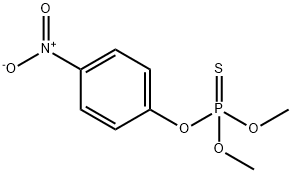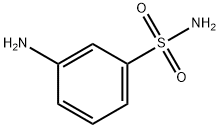Asulam
Synonym(s):Methyl N-(4-aminophenylsulfonyl)carbamate
- CAS NO.:3337-71-1
- Empirical Formula: C8H10N2O4S
- Molecular Weight: 230.24
- MDL number: MFCD00055534
- EINECS: 222-077-1
- SAFETY DATA SHEET (SDS)
- Update Date: 2023-11-16 17:07:08

What is Asulam?
Description
Asulam is a sulfonamide and can be formulated as a sodium salt. It is very water soluble and is a very systemic herbicide following foliar and root uptake, owing to its physicochemical properties (Table 1). The Log P (Kow) of 1.01 and pKa of 4.82 are optimal for phloem mobility in the plant (4). These properties contribute to the herbicidal effectiveness against perennial weeds where translocation to underground meristematic organs is essential for effective control.
Chemical properties
Light Brown Solid
The Uses of Asulam
Carbamate herbicide; folic acid biosynthesis inhibitor.
The Uses of Asulam
Herbicide.
The Uses of Asulam
Systemic, pre- and postemergence herbicide used to control several perennial grasses and certain broad-leaved weeds such as brackenfern, crabgrass, itchgrass, paragrass, tansy ragwort, and wild mustard, in alfalfa, uncropped land, certain ornamentals and turf.
Definition
ChEBI: A carbamate ester that is methyl carbamate substituted by a (4-aminophenyl)sulfonyl group at the nitrogen atom.
Health Hazard
Low order of toxicity; no adverse effect onskin reported; ingestion of large dose couldproduce cholinergic effects.
LD50 oral (rat): 2000 mg/kg.
Pharmacology
Asulam-induced growth inhibition of carrot cell cultures was reversed by 4-aminobenzoic acid (8), and depletion of folate derivatives in treated plants (7) provides further evidence that the synthesis of folic acid is the primary target of asulam. Furthermore, asulam is structurally related to sulfonilamide and to sulfonamide antimicrobial drugs, which are competitive inhibitors of 7,8-dihydropteroate synthase (DHPS) (5,9).
Environmental Fate
Soil. It is not persistent in soils since its half-life is approximately 6–14 days (Hartley
and Kidd, 1987). The short persistence time is affected by soil temperature and moisture
content. The half-life of asulam in a heavy clay soil having a moisture content of 34%
and maintained at 20°C was 7 days (Smith and Walker, 1977). In soil, sulfanilamide was
reported as a product of hydrolysis. In non-sterile soils, this compound further degraded
to unidentifiable products (Smith, 1988) which may include substituted anilines (Bartha,
1971).
Photolytic. The reported photolytic half-lives for asulam in water at pH 3 and 9 were
2.5 and 9 days, respectively (Humburg et al., 1989)
Chemical/Physical. Forms water-soluble salts (Hartley and Kidd, 1987). When heated
to 75°C, asulam decomposed to sulfanilic acid, carbamic acid and sulfanilamide. At 90°C,
4-nitro- and 4-nitrosobenzene sulfonic acids were released (Rajagopal et a
Properties of Asulam
| Melting point: | 142-144°C (dec.) |
| Density | 1.4655 (rough estimate) |
| refractive index | 1.5690 (estimate) |
| storage temp. | 0-6°C |
| solubility | DMSO (Slightly), Methanol (Slightly) |
| form | neat |
| pka | 4.82(at 25℃) |
| color | Pale Brown to Light Brown |
| Water Solubility | 5g/L(room temperature) |
| Merck | 13,862 |
| BRN | 2697523 |
| NIST Chemistry Reference | Asulam(3337-71-1) |
| EPA Substance Registry System | Asulam (3337-71-1) |
Safety information for Asulam
| Signal word | Warning |
| Pictogram(s) |
 Exclamation Mark Irritant GHS07 |
| GHS Hazard Statements |
H302:Acute toxicity,oral |
Computed Descriptors for Asulam
New Products
4-AMINO-TETRAHYDRO-PYRAN-4-CARBOXYLIC ACID HCL 4-(Dimethylamino)tetrahydro-2H-pyran-4-carbonitrile 4-Aminotetrahydropyran-4-carbonitrile Hydrochloride (R)-3-Aminobutanenitrile Hydrochloride 3-((Dimethylamino)methyl)-5-methylhexan-2-one oxalate 1,4-Dioxa-8-azaspiro[4.5]decane 5-Bromo-2-nitropyridine Nimesulide BP Aceclofenac IP/BP/EP Diclofenac Sodium IP/BP/EP/USP Mefenamic Acid IP/BP/EP/USP Ornidazole IP Diclofenac Potassium THOMAIND PAPER PH 2.0 TO 4.5 1 BOX BUFFER CAPSULE PH 9.2 - 10 CAP SODIUM CHLORIDE 0.1N CVS ALLOXAN MONOHYDRATE 98% PLATINUM 0.5% ON 3 MM ALUMINA PELLETS (TYPE 73) LITHIUM AAS SOLUTION 2-Bromo-1-(bromomethyl)-3-chloro-5-nitrobenzene 2-Bromo-3-nitroaniline N-(3-Hydroxypropyl)-N-methylacetamide 3-Bromo-6-chloropyridazine 4-ethyl-3-nitrobenzoic acidRelated products of tetrahydrofuran








You may like
-
 Asulam 98% (HPLC) CAS 3337-71-1View Details
Asulam 98% (HPLC) CAS 3337-71-1View Details
3337-71-1 -
 1-Methyl-6-oxo-1,6-dihydropyridazine-3-carbonitrile 98%View Details
1-Methyl-6-oxo-1,6-dihydropyridazine-3-carbonitrile 98%View Details
99903-60-3 -
 1823368-42-8 98%View Details
1823368-42-8 98%View Details
1823368-42-8 -
 2-(3-(tert-butyl)phenoxy)-2-methylpropanoic acid 1307449-08-6 98%View Details
2-(3-(tert-butyl)phenoxy)-2-methylpropanoic acid 1307449-08-6 98%View Details
1307449-08-6 -
 Ethyl 3-(furan-2-yl)-3-hydroxypropanoate 25408-95-1 98%View Details
Ethyl 3-(furan-2-yl)-3-hydroxypropanoate 25408-95-1 98%View Details
25408-95-1 -
 2-Chloro-5-fluoro-1-methoxy-3-methylbenzene 98%View Details
2-Chloro-5-fluoro-1-methoxy-3-methylbenzene 98%View Details
1805639-70-6 -
 1784294-80-9 98%View Details
1784294-80-9 98%View Details
1784294-80-9 -
 Lithium ClavulanateView Details
Lithium ClavulanateView Details
61177-44-4